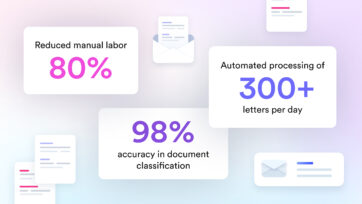- Portfolio
-
Services
Product DevelopmentFocus on the core idea and market fit while we masterfully handle user-focused product design.Learn moreEngineeringLeverage cutting-edge technology to address customer challenges with expert guidance.Learn moreAI consultingEmbrace the future of AI-driven innovation and thrive in a rapidly evolving digital landscape.Learn moreGrowth MarketingEngage targeted audiences and meet business goals through strategic marketing solutions.Learn more
- Company
- Insights
-
Areas of expertiseProduct DevelopmentFocus on the core idea and market fit while we masterfully handle user-focused product design.EngineeringLeverage cutting-edge technology to address customer challenges with expert guidance.AI consultingEmbrace the future of AI-driven innovation and thrive in a rapidly evolving digital landscape.Growth MarketingEngage targeted audiences and meet business goals through strategic marketing solutions.
Transforming Legal Operations with AI Automation
Author

Alex Krasner
CEO and Founder
I’m passionate about taking AI from the hypothetical realm into practical and building solutions that transform business operations, empowering companies to boost efficiency, reduce costs, and deliver exceptional value.
Introduction
In today’s fast-paced legal environment, medium-sized law firms face numerous challenges in managing their operations efficiently. From processing large volumes of documents to ensuring compliance with strict deadlines, legal professionals often find themselves overwhelmed by manual, time-consuming tasks. However, the emergence of artificial intelligence (AI) automation presents a game-changing opportunity for these firms to streamline their processes, reduce costs, and improve overall productivity.
- Document Intake Automation
- Data Extraction and Workflow Automation
- Document Unitization
- AI-Powered Document Review
- Conclusion
Document Intake Automation
One of the most significant areas where AI automation can make a profound impact is document intake. Law firms receive a constant influx of documents from various sources, including physical mail, email attachments, and digital files. Manually processing and routing these documents to the appropriate case management and document storage systems can be a daunting task, leading to errors and delays.
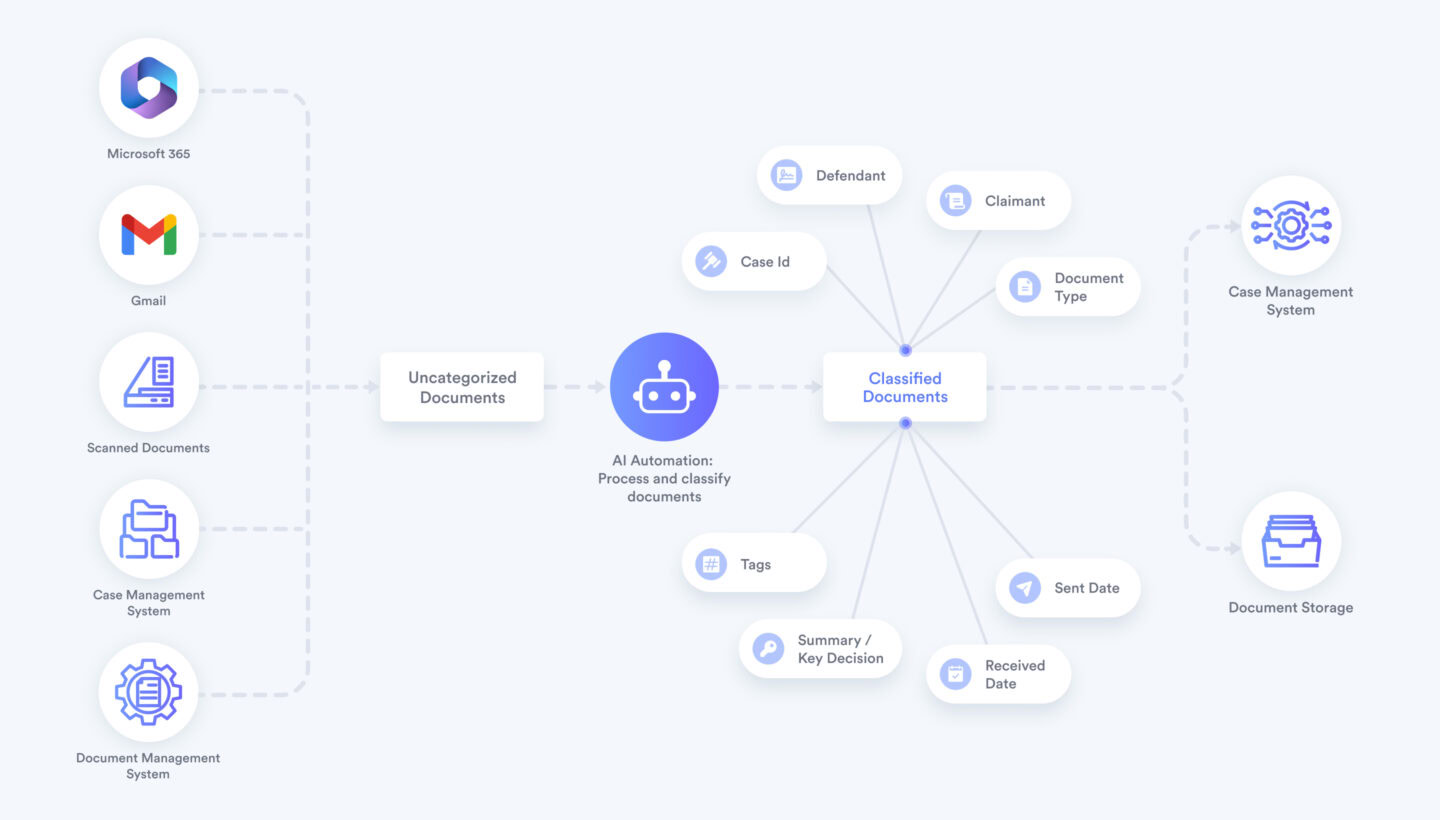
AI automation offers a solution by unifying all document input sources and integrating them directly with downstream systems. By connecting with Office 365, Gmail, scanners, and leading legal case management and document management systems, these automations ensure that documents are processed end-to-end, reaching their intended destinations promptly.
Moreover, AI automation addresses the common problem of important email attachments getting lost or buried in saved emails, making them difficult to locate when needed. The platform automatically downloads attachments from emails and processes them straight into the relevant digital case files. It can even organize and split documents into manageable, searchable files, attaching a PDF copy of the email body to each one for easy reference.
Data Extraction and Workflow Automation
Another key benefit of AI automation is its ability to extract critical data from incoming documents, enabling the automation of downstream workflows. By capturing key information such as parties, senders, treating providers, and important dates, the platform can trigger a series of automated actions.
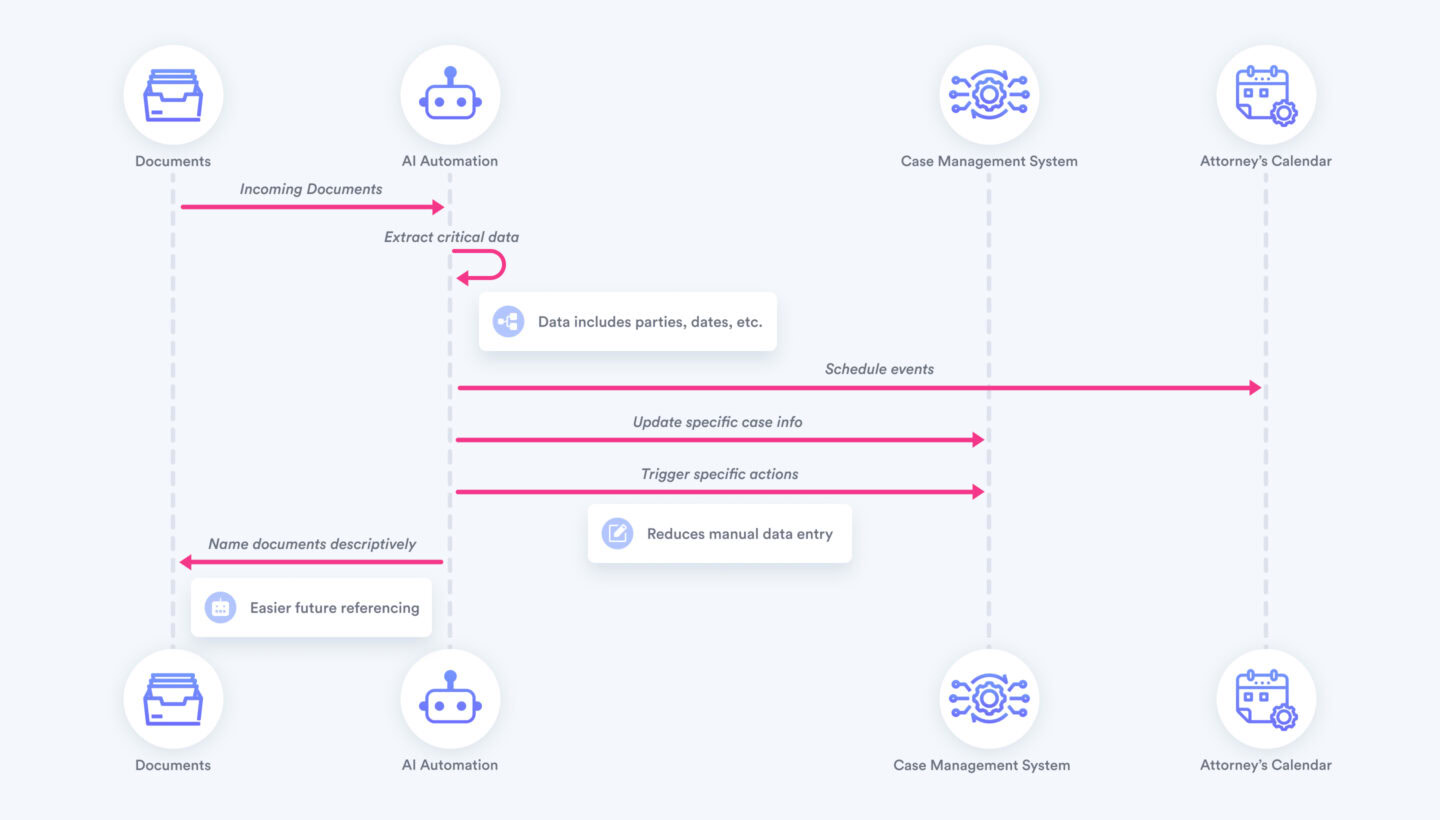
For example, the extracted data can be used to calendar events automatically, ensuring that important deadlines and appointments are never missed. It can also be employed to name documents descriptively, making them easier to find and reference in the future. Furthermore, the extracted data can be routed into specific fields in case management and other downstream systems, eliminating the need for manual data entry and reducing the risk of errors.
Document Unitization
AI automation also excels in handling large, complex documents that can be challenging for legal professionals to manage effectively. Through document unitization, the platform can break up extensive files, classify each section by time, and reorganize them chronologically. This streamlined approach significantly simplifies the review process, allowing legal teams to focus on the most relevant information without getting bogged down by irrelevant or redundant data.
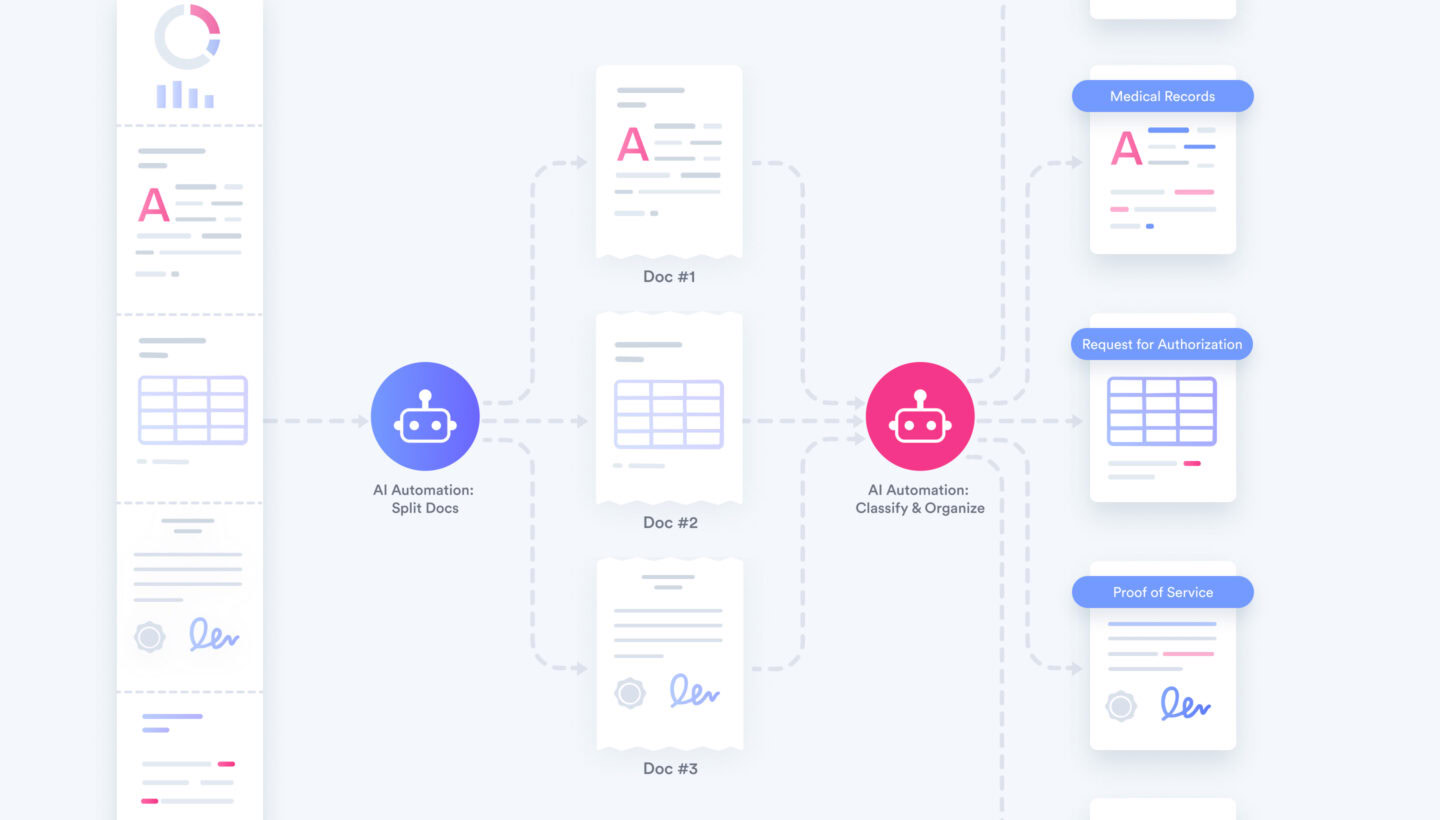
AI-Powered Document Review
In addition to document unitization, AI automation offers advanced capabilities for document review. By leveraging machine learning algorithms, the platform can classify and organize large documents, identifying key themes and tagging relevant keywords. This intelligent categorization enables legal professionals to quickly navigate through vast amounts of information and focus their attention on the most critical sections.
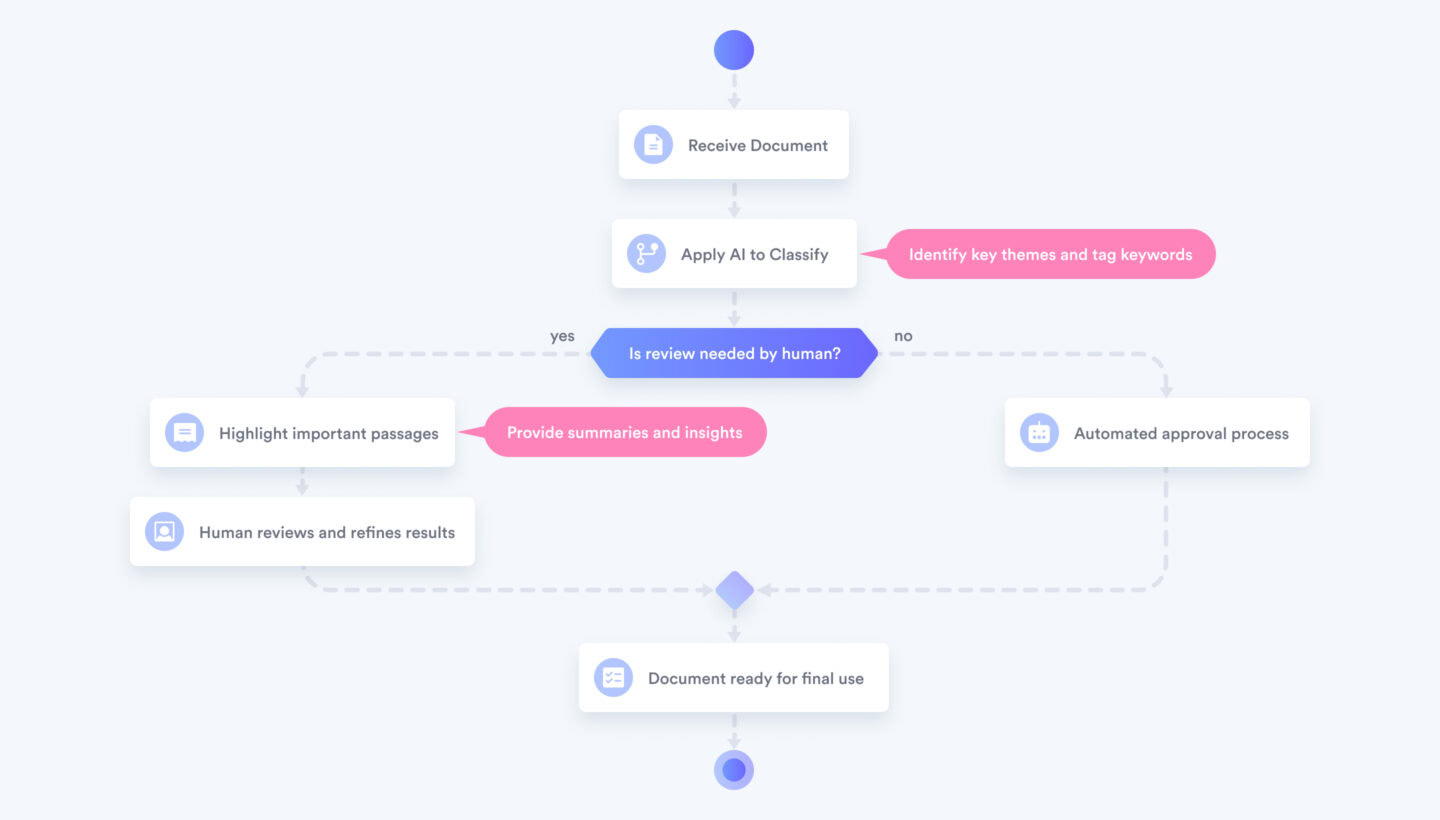
Moreover, AI-powered guidance can highlight important passages, provide summaries, and offer insights to support the human review process. This collaborative approach between AI and human expertise enhances the efficiency and accuracy of document review, ultimately leading to better outcomes for clients.
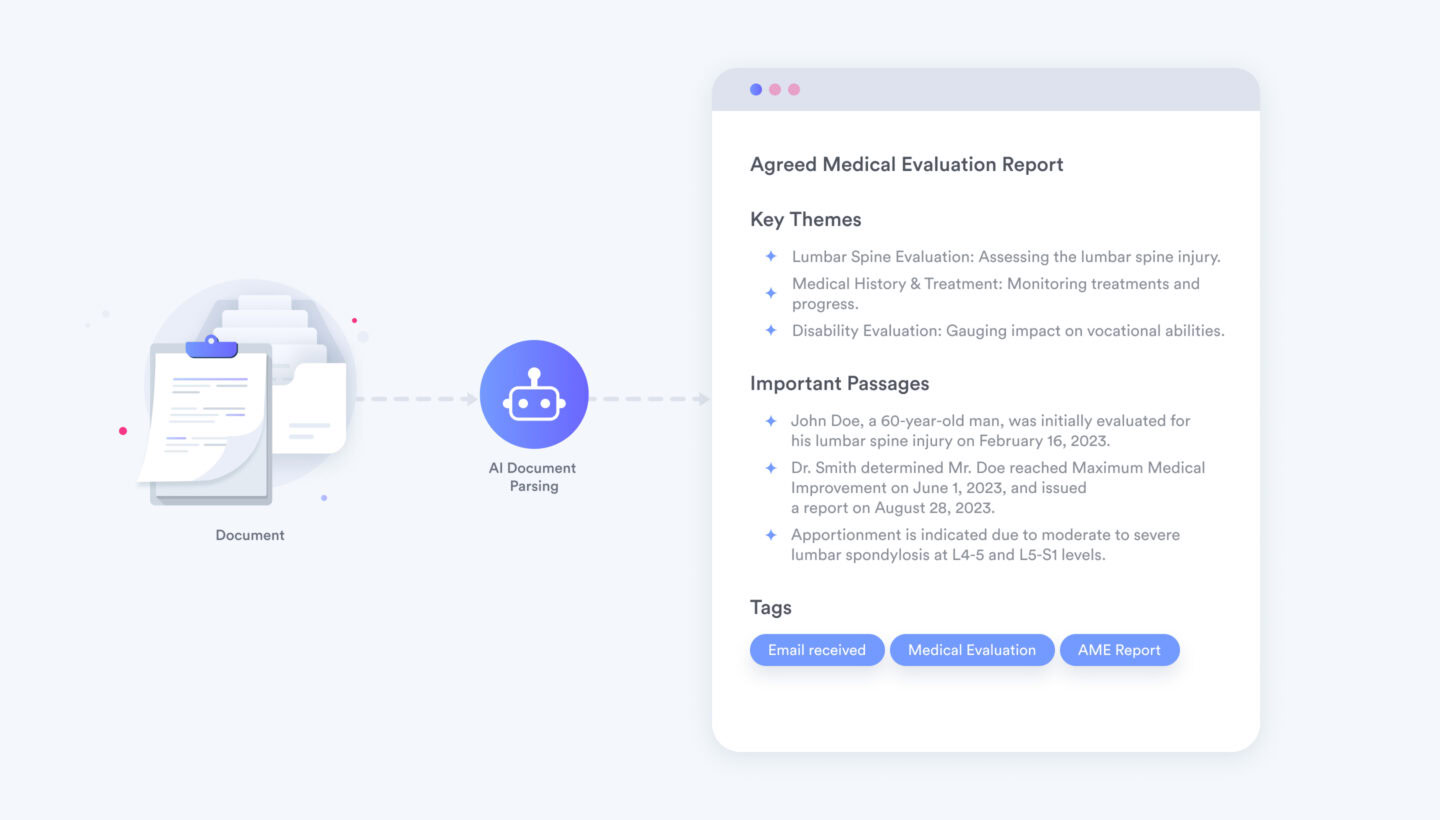
Time-Sensitive Documents
In the legal industry, time is of the essence. Missing deadlines or failing to respond to urgent matters can have severe consequences.
AI automation addresses this challenge by identifying time-sensitive and critical documents, escalating them to the appropriate team members, and tracking their handling to ensure timely resolution.
By prioritizing and monitoring these crucial documents, the platform helps law firms maintain compliance with legal requirements, meet client expectations, and mitigate the risk of potential liabilities.
Conclusion
The adoption of AI automation in medium-sized law firms has the potential to revolutionize legal operations, driving efficiency, cost savings, and improved client service.
From streamlining document intake and extracting critical data to enhancing document review and managing time-sensitive matters, AI automation empowers legal professionals to focus on higher-value tasks while minimizing manual, repetitive work.
As the legal landscape continues to evolve, embracing AI automation will become increasingly essential for law firms to remain competitive and deliver exceptional results to their clients. By harnessing the power of AI, medium-sized law firms can level the playing field, optimize their operations, and position themselves for long-term success in the digital age.
Let’s discuss your Legal Ops automation needs.

